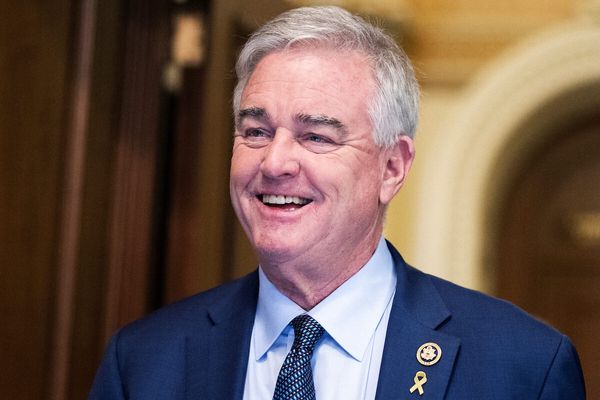
The root cause of the substation fire that shut Heathrow airport was a preventable technical fault that National Grid had been aware of seven years ago but failed to fix properly, investigators have concluded.
The final report by the National Energy System Operator (Neso) on the incident said the fire that cut power to the airport on 21 March, affecting more than 1,350 flights, almost 300,000 passengers and cutting power to 67,000 homes, was “most likely” sparked by moisture entering the insulation around wires.
The state-owned body said its investigation had found that National Grid, which owns the substation that caught fire, had been aware of the issue in 2018.
“An elevated moisture reading … had been detected in oil samples taken in July 2018 but mitigating actions appropriate to its severity were not implemented,” the report said. “National Grid has since initiated an end-to-end review of its oil sampling process, with a view to ensuring that it is robust.”
The 77-page report catalogued numerous opportunities to identify issues at the substation, but said decisions were repeatedly made to defer basic maintenance.
A National Grid electricity transmission review in 2022 indicated that fire suppression systems were “inoperable”, and a fire risk assessment in July last year stated that if a fire started in any of the three supergrid transformers at the substation “it would not be suitably suppressed”.
The assessment resulted in the issuing of a “high priority” action for fire systems to be “appropriately serviced and maintained” but “that action remained outstanding at the time of the incident”, Neso said.
A spokesperson for National Grid said it had a “comprehensive asset inspection and maintenance programme in place, and we have taken further action since the fire … This includes an end-to-end review of our oil sampling process and results, further enhancement of fire risk assessments at all operational sites and re-testing the resilience of substations that serve strategic infrastructure.
In response to the findings, Ofgem, the energy regulator for Great Britain, has opened an investigation into National Grid for what it called a “preventable technical fault”. Ofgem said it would review whether National Grid complied with legislation and licence conditions relating to the “development and maintenance” of the electricity system at North Hyde.
It has also commissioned an independent audit into National Grid’s critical infrastructure assets and their status. Ofgem said the aim was to identify whether the “failings identified in Neso’s report … were a one-off in nature, or more systemic across the National Grid estate”.
Akshay Kaul, the director general for infrastructure at Ofgem, said: “The North Hyde substation fire resulted in global disruption, impacted thousands of local customers, and highlighted the importance of investment in our energy infrastructure. We expect energy companies to properly maintain their equipment and networks to prevent events like this happening. Where there is evidence that they have not, we will take action and hold companies fully to account.”
Neso said that using forensic analysis from National Grid and the London fire brigade it had found evidence of a “catastrophic failure” on one of the transformer’s high-voltage bushings at the 57-year-old power substation that caused it to catch fire.
The bushing provides insulation for electrical current to flow safely and is typically made from materials such as porcelain, resin or oil-impregnated paper.
Heathrow’s private electricity network took hours to power up again after the outage, even as two nearby substations continued to operate as normal. Europe’s largest airport took a further seven hours to reopen after the power was restored, according to the report, meaning flights were disrupted for almost 24 hours after the fire broke out.
Three datacentres that lost power in the incident were able to continue operations through the use of backup generators.
Airlines based at the airport have estimated the closure cost carriers between £80m and £100m. Heathrow has said it is considering legal action against National Grid.
“The final NESO report finds clear failings by National Grid that resulted in a loss for both Heathrow and our airlines,” said a spokesperson for Heathrow. “We are considering if we want to pursue legal action as a result of the clear Neso report and Ofgem enforcement action.”
Neso’s review, which looked at 900 pieces of evidence, found that energy network operators “are not generally aware” whether customers connected to their networks are designated as critical national infrastructure (CNI).
“There is currently no explicit cross-sector requirement on CNI operators to ensure appropriate continuity of operations in response to power disruption,” it said.
Fintan Slye, the chief executive of Neso, said that despite the power outage and closure of Heathrow being “hugely disruptive”, all parties involved “responded quickly and professionally”.
The incident has been hugely embarrassing for Thomas Woldbye, the airport’s chief executive, who has expressed his “deep regret” at being uncontactable and sleeping through the power outage.
Woldbye slept through two emergency notification calls and “several” phone calls from Heathrow’s chief operating officer, Javier Echave, in the early hours of the morning after the fire cut power to the airport.
The energy secretary, Ed Miliband, said: “The report is deeply concerning, because known risks were not addressed … My department, working across government, will urgently consider the findings and recommendations set out by Neso and publish a response to the report in due course.”







